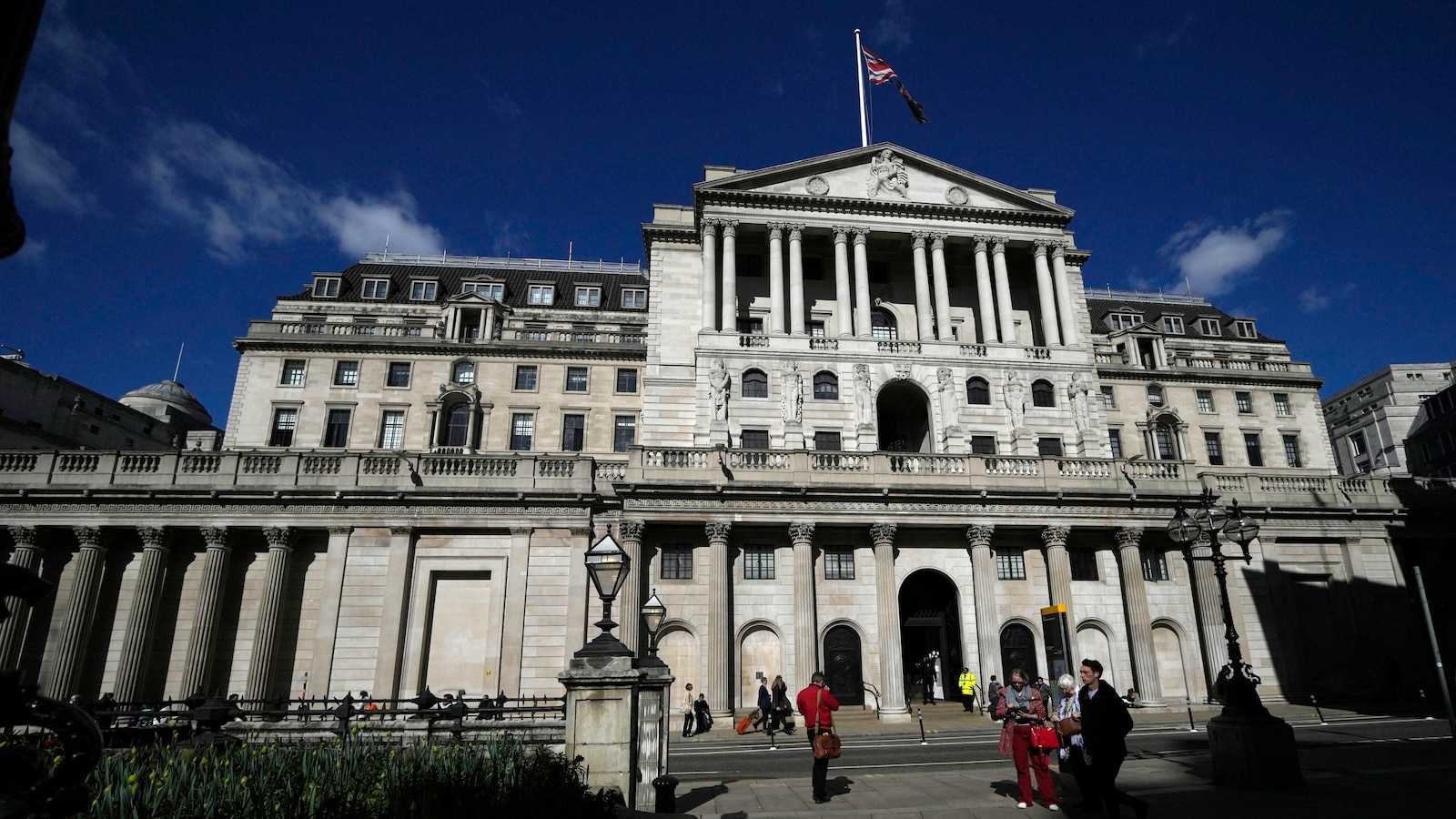Bank of England Lowers Key Interest Rate to 4% Amid Economic Concerns
The Bank of England cut its main interest rate to 4%, lowest since March 2023, by a 5-4 vote. This decision addresses rising inflation, 4.7% unemployment, and shrinking GDP.
Subscribe to unlock this story
We really don't like cutting you off, but you've reached your monthly limit. At just $5/month, subscriptions are how we keep this project going. Start your free 7-day trial today!
Get StartedHave an account? Sign in
Overview
- The Bank of England reduced its main interest rate to 4%, marking the lowest level since March 2023, following a historic 5-4 split vote by its rate-setting committee.
- This rate cut occurred despite consumer prices rising 3.6% in the 12 months through June, exceeding the bank's 2% target, with inflation expected to reach 4% by September.
- Britain's unemployment rate rose to 4.7% in the three months through May, a four-year high, and GDP shrank in April and May, influencing the Bank of England's rate cut.
- The Bank of England's decision to lower rates was widely anticipated in financial markets, reflecting concerns over economic slowdown and the need for stimulus.
- The rate cut aims to stimulate the economy amidst warnings that soaring food prices could further drive inflation, presenting a complex challenge for policymakers.
Report issue

Read both sides in 5 minutes each day
Analysis
Center-leaning sources cover this story neutrally, providing a balanced account of the Bank of England's interest rate cut. They explain the decision's rationale, citing concerns about a sluggish economy, while also noting inflation remains above target. The reporting incorporates diverse perspectives from economic experts, the Bank of England, and government officials, allowing readers to form their own conclusions.
Articles (6)
Center (4)
FAQ
The Bank of England lowered the interest rate to 4% to stimulate the economy amid concerns of economic slowdown, rising unemployment to 4.7%, and shrinking GDP, despite inflation exceeding its 2% target at 3.6%. The rate cut reflects a balancing act to support growth while acknowledging persistent inflation pressures.
The Monetary Policy Committee voted narrowly with a 5-4 majority in favor of reducing the Bank Rate by 0.25 percentage points to 4%, indicating a closely divided view on the appropriate monetary policy stance.
Inflation stood at 3.6% in June 2025, which is above the Bank of England's 2% target. Key contributors include energy, food, and administered prices, with sticky service sector inflation and pay growth still elevated but showing signs of slowing.
The interest rate cut reduces borrowing costs for UK SMEs, which are facing economic pressures such as higher taxes and expenses. This easing is expected to improve business confidence and consumer spending, supporting SMEs that employ millions and contribute significantly to the economy.
Key indicators included rising unemployment at a four-year high of 4.7%, a shrinking GDP in April and May 2025, and weak private sector employment growth, which signaled economic weakness warranting a looser monetary policy despite inflation concerns.
History
- This story does not have any previous versions.





